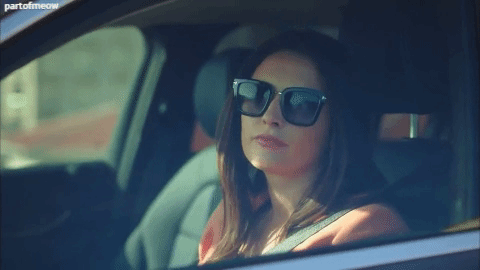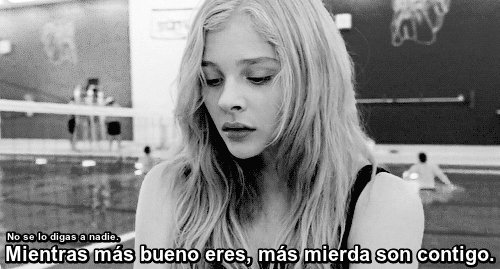Text
Project Update: Elfy

This week I’ve been thinking about the business-facing side of my idea for Elfy: an interactive gaming app that helps pre-school children develop empathy through play.

As Elfy has a specific educational function - to help parents and carers work through specific social skills with young children - it has the potential to get Government Funding to make it accessible to the broadest audience possible.
Earlier this year, the Department for Education announced that families from disadvantaged backgrounds will be given free access to children’s educational apps, encouraging parents to think about how to use children’s screen time constructively, rather than as an easy distraction.
Up to 375 schools and nurseries are being recruited for the projects, run by the Education Endowment Foundation (EEF) and Leeds-based education charity SHINE.
This announcement suggests potential for the Department for Education, Education Scotland, the EEF and charities like SHINE to partner on a project like Elfy and fund its development.
So what’s next?
2 notes
·
View notes
Text
Opening Doors
Ah … so that’s what a narrative designer does!
Until recently, I’ve been nodding and ‘mmm’ing’ about how a screenwriter or storyteller fits into the fabric of gaming, while not seeing it as a screenwriter’s medium.
My older brother used to be a video game critic, and I spent most afternoons after school battling him at Mario Kart and Tekken, but I never connected the craft with screenwriting. I thought of it more as a designer’s medium.

The other week, narrative designer Cara Ellis enlightened me as to how a screenwriter fits into the fabric of the gaming industry, how story doesn’t mean ‘words’ and to build suspense to keep players ‘opening doors’.

While Cara’s passion and talent shone through her presentation, and her insights demystified the role of a narrative designer in the gaming industry, I’m not personally or professionally interested in gaming or narrative design, but have newfound respect for the craft.
#interact19
0 notes
Text
Dear Angelica,

Last night I watched the animated virtual reality short film Dear Angelica produced by Oculus Story Studio and felt incredibly moved and hopeful about the form for the first time.
My husband got an Oculus headset at Christmas and I’ve explored a range of games, films and experiences over the past few weeks and have, until now, felt unsatisfied.
While I enjoyed the dystopian workplace short Merger by Keiichi Matsuda I felt that it delivered on a vivid immersive experience but the story lacked emotional depth.
Dear Angelica– a hit at the 2017 Sundance Film Festival - is an incredibly moving emotional portrait of grief. It’s director and former Pixar artist Sascha Unseld has done a fantastic job of taking you inside the perspective of a woman missing her mother, and exploring the story and emotion in a way only VR can.
I love the painterly visual style of the film and how the narrative is simple and familiar. Unlike in Merger, you’re not constantly asking the film ‘what is this?’ or ‘what’s going on now?’ Instead you’re just in it, going deeper into the beautiful visual experience and human emotion.
And while the interaction is minimal, the ‘screen’ story is immersive and captivating. Dear Angelica doesn’t require your physical cues to progress the story though the narrative features natural pauses that allow you to look around and experience it.
Bravo!

3 notes
·
View notes
Text
Collaborative Storytelling
This week we explored collaborative storytelling with our guest lecturer and creative practitioner Gill White.
We were split into groups and encouraged to create an artificial crime scene. The groups were mixed as we drew items, cut them out, and placed them – along with dialogue notes - on each other’s crime scenes. Finally, we went back into our groups and, without moving the clues, arranged the clues into a narrative and then presented it to the class.
The process was interesting and enjoyable and reminded me of my days at drama school. According to Gill’s website, the exercise was designed to “tackle creative challenges by harnessing storytelling and interactive play, with design principles to spark a collective imagination.”
Writing is a lonely, isolating job, and the experience of collaboratively and creatively breaking down and building stories is incredibly liberating.
Gill talked about how she applies these techniques to her work, when breaking down digital narratives. I think visually and like to break down story with post it notes before I start writing but until now I’ve never thought of opening up that process into something more collaborative.
I’d like to learn more about Gill’s process in adapting these techniques to real world problems.
Unfortunately I didn’t take any pictures during the class but I downloaded these ones off Gill’s website to illustrate the creative exercise.



1 note
·
View note
Text
Data Danger

This week I explored the personalised documentary series about privacy and the web economy, Do not Track.
The series featured seven episodes on different data related topics from Like Mining, Cookies, Geo-Tracking, Big Data and Social Networks.
It is a fascinating and terrifying series that left me wanting more discussion and public debate on our data is used.
I’m still reeling from watching Brexit: An Uncivilised War on Channel 4 earlier this year, about the unethical manipulation of data to sway the British referendum on Brexit.

Do Not Track echoed a lot of my anxieties and beliefs about the problems we face as a society because of the massive financial value our data.
On a personal level, I learned that I am what the documentary referred to as a ‘major user of apps’. I unwittingly accept permissions for all of those apps, activate geo-tracking and frequently use public wifi.
My personal data is being transmitted in so many ways and I can’t really see what is being shared, and because I accept the terms and conditions I am consenting to sharing personal information on my phone. Yes, including private images in my photos app.
Like it is for most of us, having a phone isn’t optional for me. I have to use a mobile and therefore, have to be tracked, and I don’t have a lot of opportunities to turn it off. It’s not about personal choice.
On a societal level, we haven’t set any limits on the types of tracking that happen. Sure, the Cambridge Analytica and Facebook scandals of last year have brought attention to the debate but they haven’t changed the fact industries are continuing to mine and manipulate our data every day.
As a society we need to discuss the cost of having free unprotected access to the internet and its services and push back against the tide of data manipulation rising around us.
3 notes
·
View notes
Photo

This week I downloaded and explored Pokémon Go, the augmented reality mobile game developed in 2016 in collaboration with Ninantic and Nintendo.
I’ve heard about the game and knew it was meant to be insanely popular and addictive, as well as financially successful (as of December 2018, it grossed over $3billiion in global revenue) but personally, as a plate-spinning working mum, I didn’t have the time or inclination to check it out.
Until now …
Today, I spent about an hour on the Pokémon Go app and really enjoyed it.
I liked the set-up and introduction sequence. It’s something I’d like to incorporate in the design of the game I’m developing.

Experiencing the location-based technology side of the game was fascinating. I’ve always thought of location-based technology as working best when it’s in a controlled physical environment, like a museum or park, but was blown away by how the developers managed to make that work for an uncontrolled international audience.
The fact it promotes physical activity, something video games get a bad rap about, is also genius.

I read that it’s also inherently social with multiplayer elements but I didn’t personally experience that when I played. Apparently, the multi-player, social design of the game engaged over 231million users in one month alone. 231 million! And some 1.1billion Facebook interactions and mentions. Those numbers are insane.
While I enjoyed feeling out the game and getting a sense of what it’s about, I found reading about Pokémon Go more interesting. The cultural impact of the game is phenomenal. It’s use has been linked to users catching criminals, boosting the local economy in places Pokémon’s can be found, including places of worship, but has also been linked to causing dangerous traffic congestion, accidents and physical violence.
It brings to light how developers can create a game with a certain vision in mind but it is only when users experience it that it finds its true, and often unintended, purpose.
Though, as I agreed to the endless list of permissions when I registered the app, I couldn’t help but think this game might be another sinister step on the road to using interactive media to mine people’s information and use it against them. Makes you wonder, when they came up with the tag line for Pokémon Go “Gotta catch ‘em all!” … who they were really talking about catching?

#Interact19 #augmentedreality #pokémongo
0 notes
Text
\\ you can’t do that right now //

I just played, or should I say ‘tried’ to play, Exoriare. It was my first experience playing an Alternative Reality Game and it was, to put it mildly, challenging!
I have just spent the last half hour trying - and failing - to instruct someone (?) to do something (?) for some reason.
Our exchange went something like this:
Exoriare: You are standing in an open field, west of a white house, with a boarded front door. There is a small mailbox here.
Me: Open Mailbox.
Exoriare: \\ you can’t do that right now. //
Me: Go in House.
Exoriare: \\ you can’t do that right now. //
Me: Look in window?
Exoriare: \\ you can’t do that right now. //
Me: Call an Uber?
Exoriare: \\ you can’t do that right now. //
Me: Order pizza?
Exoriare: \\ you can’t do that right now. //
Me: Shoot me!
Exoriare: \\ all you have to do is find the red button. There is one in the house. //
Me: Oh FFS, you just told me I can’t go in the house!!!
Exoriare: \\ you can’t do that right now. //
Me: ARGGHHHH!
Frustrated but determined to work it out, I googled ‘tips and walkthroughs for Exoriare’ but the results were useless. Then I went back and ‘skimmed’ the Exoriare graphic novel for a clue to the game, and while the graphics are really strong ...

I remembered how I just.can’t.stand.comic.sans.font and couldn’t absorb any of the information in the captions.
So, in summary, I’m clearly not the target audience for this game. Unless, the game’s intention is to drive people insane, in which case … BINGO!

2 notes
·
View notes
Text
Socially valuable gaming

This week I did some online research into existing video games, targeted at primary age children, that develop empathy, aka Socially Valuable Gaming.
According to data from the Kaiser Family Foundation, in the US on average, youth between 8 - 18 years rack up more than 70 minutes of video gameplay daily. This spike in gameplay during adolescence coincides with an explosion in brain growth, as well as a time when kids are susceptible to first encounters with depression, anxiety, and bullying.

In 2018, researchers from University of Wisconsin-Madison decided to see if they could use video games for positive emotional development by designing a game to boost children’s empathy.
The game they created is called Crystals of Kaydor, and its aim was to use gaming technology to create games that are less addictive and also socially valuable*.
Crystals of Kaydor begins when a space-exploring robot crashes on an unfamiliar planet, leaving its spaceship unusable. The only way to repair it? Build emotional rapport with the local alien inhabitants. The problem is that the aliens speak a totally different language. Luckily, the aliens’ facial expressions are remarkably human-like. To win the game, kids have to learn to identify the type and intensity of emotion the alien’s faces are displaying, whether it’s anger, fear, happiness, surprise, disgust, or sadness. And as they played, the kids learn how to better understand emotions of their fellow humans.
In as few as two weeks, kids who played the game showed greater connectivity in brain networks related to empathy and perspective taking. Some also showed altered neural networks commonly linked to emotion regulation.
In 2016, another video game designed to build empathy was designed. It was called That Dragon, Cancer. It forced the player to experience what life was like for a normal suburban family after one of their sons, Joel, was diagnosed with a brain tumour at the age of one.
While it was dubbed ‘unforgettable’, 'remarkable’ and 'beautiful’ by critics,it was no doubt hard going for the young players.
That Dragon, Cancer highlights the distinction between a game that is overtly good for you and one that presents as entertainment. While I want to create something with a meaningful educational experience, my goal is to create a game that primary age children also want to play.
An article in Killscreen titled The Problem with Empathy Games highlights how video games that strive to forge empathetic connections between players and subjects rely on encouraging perspective-taking. And many game developers struggle to get players to form true emotional connections with the characters and storylines.
So how do you create storylines and characters that help players form these connections?
“You have to start with, ‘I want to take someone on an emotional journey. What is that emotional journey?’” Vander Caballero, Creative Director at Minority Media said about the development of empathy games in an interview with Gamasutra. “Then the question is, ‘what can I bring to someone’s life that’s going to be important and meaningful for them, a lesson that will help people in their life?’”
*Games that develop empathy skills can also benefit individuals on the autism spectrum.

youtube
youtube
0 notes
Text
Empathy & The Arts
This is my blog for the Interactive Media Module on my Screenwriting MA at Napier University, 2019
In week one, we were given the assignment to set up a Tumblr blog and post once a week throughout the course. So this is my first blog ... so far so good.
I thought I might note my process to find inspiration for the personal project ... which I’m calling an: educational interactive video game that uses the arts to build empathy (working title!)
Here’s how I got there ...
Firstly, I thought about what area of digital media interests me most.

I’ve spent the last decade working in marketing and communications across the performing arts. From the Sydney Opera House and Sydney Film Festival to the Edinburgh International Festival and Edinburgh International Children’s Festival, I have developed and delivered: PR stunts, programme launches, fundraising events, red carpets media and social media strategy (which most recently got a client trending on Twitter for 12 hours (in Edinburgh).
And throughout my time working in communications for the arts, I kept getting hit by the idea that art teaches empathy. That when a storyteller, theatre maker or artist takes you into a different world or perspective it creates understanding and compassion.
Empathy. Understanding. Compassion.
The internet, social media and digital technology often gets a bad wrap for making us feel connected but meanwhile being responsible forour decline in empathy.
I have two small children, a relentlessly destructive 2-year-old, and a curious and socially-minded 5 (AND A HALF!)-year-old. I recently went to a creative learning concert at my 5-year-old’s school to raise awareness around mental health and bullying. It was scheduled in response to a recent spate of bullying at her school. The concert’s heart was in the right place but it was spectacularly analogue.
It inspired me to think about creating an educational game / tool that can be used to develop empathy and combat bullying in schools.
Studies have found that 50% of UK girls aged between 11 and 18 are bullied in school.

And many teachers are aware of the power of empathy to reduce cyberbullying in schools.
I came across this examples of a Montreal-based digital media innovator Minority Media who created a video game that teaches empathy. “Empathy gaming,” an immersive form of gaming where players step into the shoes of video game characters, forces players to confront real human issues, such as bullying, alcoholism and depression.
While Minority Media’s example is really interesting, I want to explore developing a game or interactive tool (VR?) for a younger audience. I want to develop a game teachers can use to help teach empathy to primary children.
A recent report by the independent UK charity Children in the Artsfound that two thirds (68%) of primary schools in England offer less arts education now than in 2010, and half (49%) say the quality of what there is has got worse.
They continue: “This narrowing of access risks widening existing inequality in access to the arts and limits the horizons of young people.”
So, for now, my project brief covers five ideas;
- Interactive media; video game or VR
- Education; primary school
- The Arts; theatre, dance, film
- Empathy Vs Bullying
Or, an educational interactive video game that uses the arts to build empathy! Say what? I really need a better working title.

1 note
·
View note